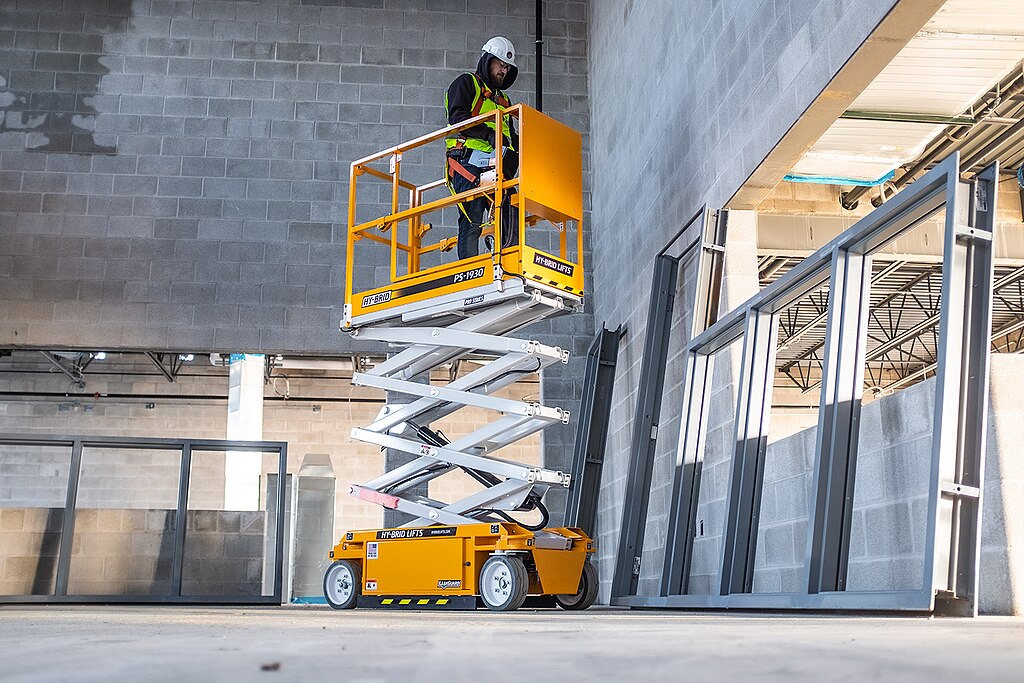Scissor Lifts: Essential Equipment for Vertical Access in Construction and Warehousing
Scissor lifts are versatile and indispensable pieces of equipment used across various industries, particularly in construction, warehousing, and manufacturing. These hydraulic-powered platforms provide a safe and efficient means of vertical access, allowing workers to reach heights that would otherwise be challenging or dangerous. As a critical component of modern industrial operations, scissor lifts have revolutionized the way tasks are performed at elevated levels, enhancing both productivity and safety in the workplace.

The lifting mechanism typically consists of one or more hydraulic cylinders that push the scissor arms apart, causing the platform to rise. As the hydraulic fluid is released, the platform descends in a controlled manner. This simple yet effective design allows for smooth and stable vertical movement, making scissor lifts an ideal choice for various applications requiring temporary elevated access.
What are the Main Types of Scissor Lifts?
Scissor lifts come in several types, each designed to meet specific operational needs:
-
Electric Scissor Lifts: Powered by rechargeable batteries, these are ideal for indoor use due to their zero emissions and quiet operation.
-
Rough Terrain Scissor Lifts: Equipped with large, rugged tires and powerful engines, these lifts are designed for outdoor construction sites and uneven surfaces.
-
Diesel Scissor Lifts: Offering high power output and long operating times, diesel lifts are suitable for extensive outdoor projects.
-
Pneumatic Scissor Lifts: Operated by compressed air, these lifts are often used in specialized industrial settings where electrical sparks could be hazardous.
-
Hydraulic Scissor Lifts: Utilizing hydraulic fluid for power, these lifts provide smooth operation and are commonly used in both indoor and outdoor applications.
Each type has its advantages, and the choice depends on factors such as the working environment, height requirements, and load capacity needed for the job.
What are the Key Benefits of Using Scissor Lifts?
Scissor lifts offer numerous advantages that make them essential in many industries:
-
Improved Safety: By providing a stable platform with guardrails, scissor lifts significantly reduce the risk of falls compared to ladders or scaffolding.
-
Increased Productivity: Workers can quickly and easily move to different heights, carrying tools and materials with them, which streamlines operations and saves time.
-
Versatility: With various sizes and weight capacities available, scissor lifts can be used for a wide range of tasks, from maintenance to construction.
-
Space Efficiency: When not in use, scissor lifts can be compactly folded, making them ideal for storage in warehouses or on construction sites with limited space.
-
Cost-Effectiveness: By replacing traditional scaffolding or multiple ladders, scissor lifts can reduce equipment costs and labor time for setup and teardown.
-
Enhanced Accessibility: Scissor lifts can reach areas that might be difficult or impossible to access with other equipment, improving overall workplace efficiency.
How are Scissor Lifts Used in Construction and Warehousing?
In the construction industry, scissor lifts play a crucial role in various tasks:
-
Installing overhead fixtures, such as lighting or HVAC systems
-
Painting and finishing high walls and ceilings
-
Erecting steel frameworks and performing welding at height
-
Window installation and exterior building maintenance
In warehousing and manufacturing settings, scissor lifts are equally valuable:
-
Stocking and retrieving inventory from high shelves
-
Performing maintenance on overhead conveyor systems
-
Conducting inventory counts and inspections at elevated levels
-
Facilitating the assembly of large machinery or products
The ability to safely lift workers and materials to precise heights makes scissor lifts an indispensable tool in these industries, contributing to increased efficiency and reduced workplace accidents.
What Safety Considerations are Important When Using Scissor Lifts?
While scissor lifts enhance workplace safety, proper usage and precautions are essential:
-
Operator Training: All personnel using scissor lifts should receive comprehensive training on operation, safety procedures, and emergency protocols.
-
Load Capacity: Strict adherence to the manufacturer’s specified weight limits is crucial to prevent tipping or structural failure.
-
Workplace Assessment: Before use, the work area should be inspected for potential hazards such as uneven surfaces, overhead obstructions, or electrical lines.
-
Stabilization: Outriggers or stabilizers should be properly deployed on uneven terrain to ensure platform stability.
-
Fall Protection: While guardrails provide primary fall protection, additional personal fall arrest systems may be required in certain situations.
-
Weather Considerations: Outdoor use of scissor lifts should be restricted during high winds or severe weather conditions.
-
Regular Maintenance: Routine inspections and maintenance are essential to ensure the lift’s mechanical integrity and safe operation.
By following these safety guidelines, organizations can maximize the benefits of scissor lifts while minimizing the risk of accidents or injuries.
Scissor lifts have become an integral part of modern industrial operations, offering a safe and efficient solution for vertical access needs. From construction sites to warehouses, these versatile machines continue to improve workplace productivity and safety. As technology advances, we can expect to see further innovations in scissor lift design, potentially including enhanced automation features and eco-friendly power options, further cementing their role as essential equipment in various industries.






